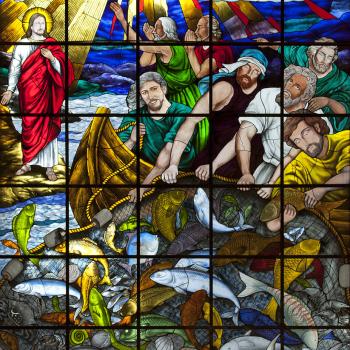The phrase "the birds of the air nested in its branches (or shade)" is a clue that connects this parable with several Old Testament passages where trees are used as metaphors for nations. Israel is depicted as a noble cedar in Ezekiel 17:22-24—"In the shade of its branches will nest winged creatures of every kind" (v. 23). Assyria (Ezekiel 31:6) and Babylonia (Daniel 4:12) are both portrayed using the metaphor of a cedar tree. They are lofty and proud, but pride will lead to their downfall. The righteous person who trusts in God is compared to a flourishing tree in Psalms 1:3, 92:13-15, and Jeremiah 17:7-8. (Donahue, 37)
Parables, rather than simple stories with one point, are complex scenarios that can evoke all kinds of connections with other texts. The humble mustard seed that becomes a shrub could make us think of God's care for us like a flourishing tree. Likewise, it could turn our minds to the fact that the mustard shrub is not going to be like the mighty trees or empires of former times, which grew through power and violence.
A scruffy shrub seems like an odd choice as a metaphor for God's kingdom when one could have chosen a magnificent cedar. Jesus' parables call his audience to expect the in-breaking of God's reign into our ordinary daily lives. They also call us to remember that the kingdom of God has its own time and rate of growth. They call us, in John R. Donahue's words, "to look beyond what we see to what we hope for."(Donahue, 38) That's what loving fathers do with regard to their children.
In Mark's gospel several characters, who are insignificant and not even disciples, are praised for their faith. The disciples, as we've seen, often fall short. These commendable cameos include the paralytic's friends (2:1-5), the Gerasene demoniac (5:19-20), Bartimaeus (10:52), the scribe (12:34), the woman with the ointment (14:3-9), women disciples at the crucifixion (15:40-41), and Joseph of Arimathea (15:43). (See: Larry W. Hurtado's essay, "Following Jesus in the Gospel of Mark—and Beyond," in Longenecker's Patterns of Discipleship in the New Testament, 21.) These persons are, in a way, living parables. They are examples of mustard seeds, which grow into examples of faith that can nurture future would-be disciples.
We 21st-century types want our lives to be full of successes and significance. We want our children to be impressive to the world around us. Jesus calls on us to have more patience with and respect for failure, hiddenness, and insignificance. They point beyond themselves toward the reality of the kingdom of God already in our midst. There is a message there for all of us in our relationships with one another today, not just fathers.
Sources Consulted
Stephen C. Barton, The Spirituality of the Gospels (Peabody, Massachusetts: Hendrickson Publishers, 1992).
John R. Donahue, The Gospel in Parable (Fortress Press, 1988).
Richard Longenecker, Patterns of Discipleship in the New Testament (Eerdmans Publishing Co, 1996).
Bonnie Bowman Thurston, Preaching Mark, (Fortress Press, 2002).





